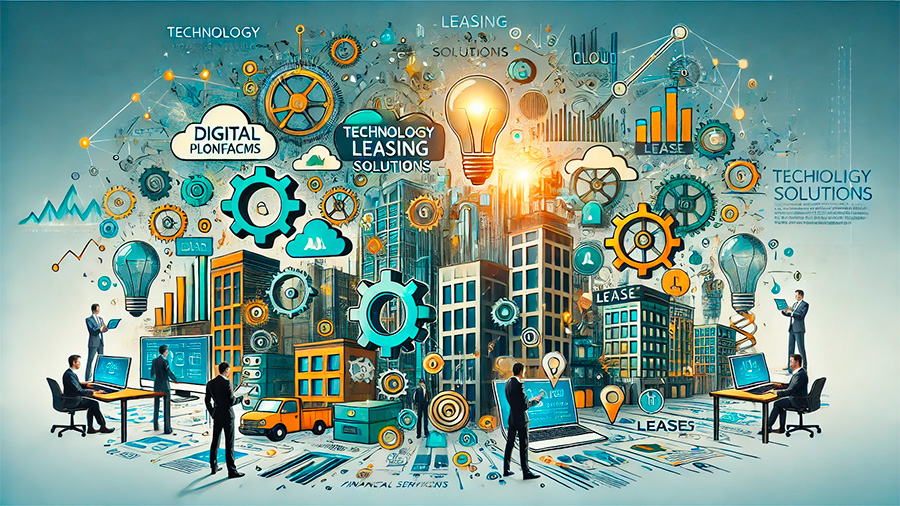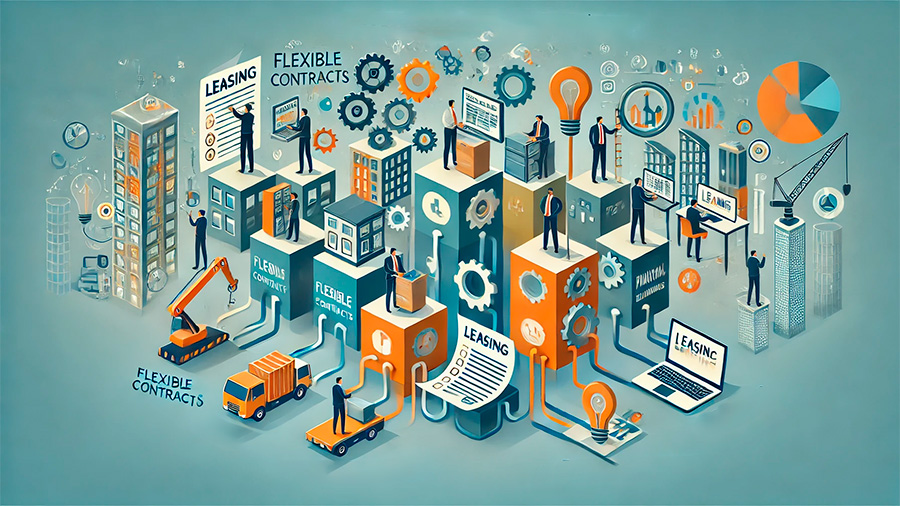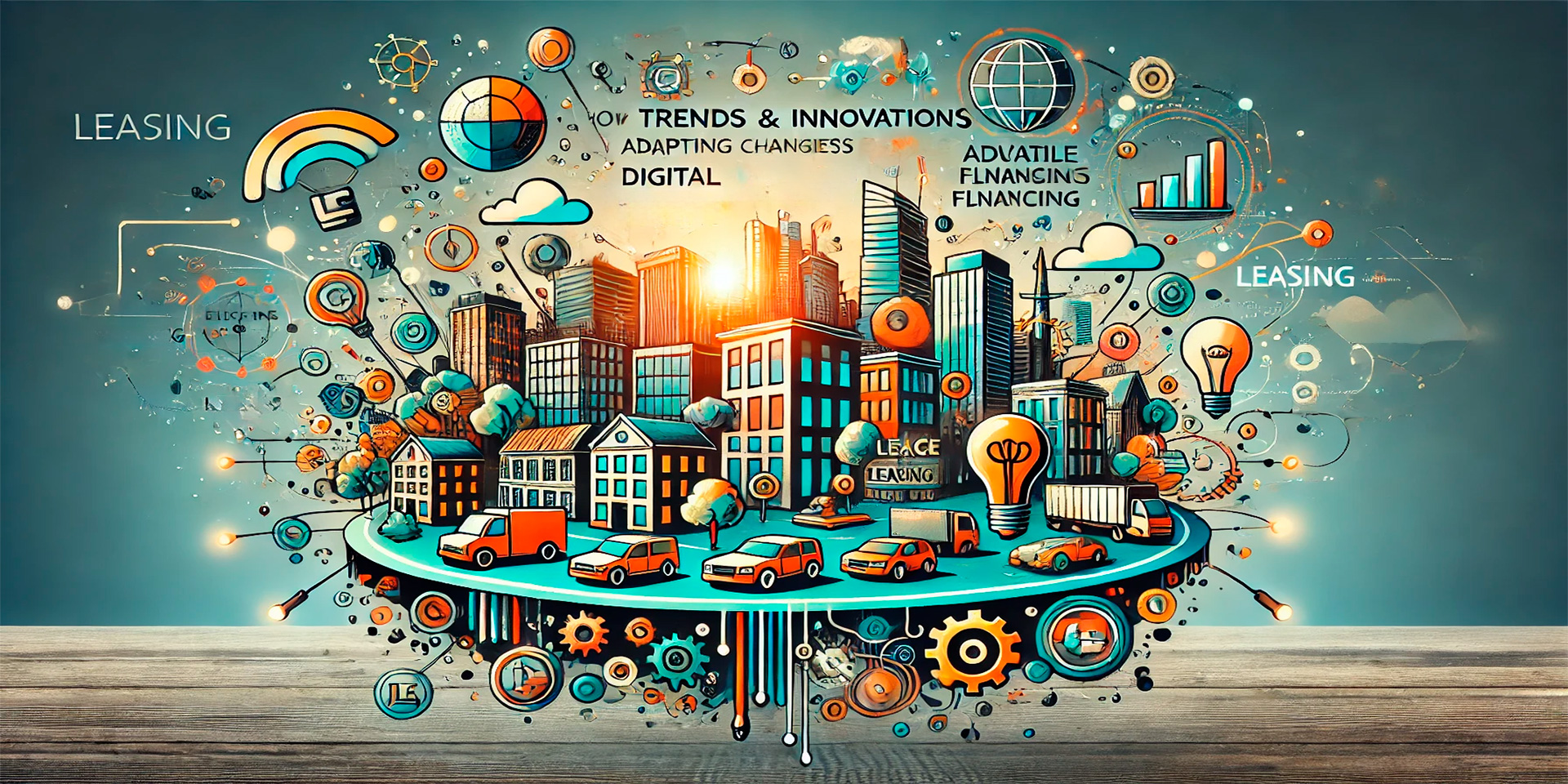As global economic conditions continue to evolve, so too does the landscape of business financing. Leasing, a financial tool that has long provided flexibility and reduced capital investment for businesses, is adapting to meet new challenges. From rising inflation and supply chain disruptions to the growing demand for sustainability and technological advancements, leasing is evolving to help businesses navigate uncertainty and stay competitive.
This article explores the future of leasing and how it will impact businesses across industries, offering insight into the trends and innovations shaping this vital financing option.
Adaptation to Economic Volatility
With inflation on the rise and economic instability affecting markets worldwide, businesses are seeking ways to reduce risk and maintain financial flexibility. Leasing offers a solution by allowing businesses to access the equipment and technology they need without the significant capital outlay associated with purchasing. Fixed lease payments provide predictable expenses, which is especially important in volatile economic conditions where costs fluctuate unpredictably.
In the future, leasing is likely to become even more attractive as businesses look for ways to manage cash flow amid economic uncertainty. As inflation drives up the cost of ownership, leasing offers a way to preserve cash reserves while ensuring businesses have access to the tools necessary for growth. Leasing companies are also expected to introduce more flexible terms and structures, giving businesses the ability to adapt more quickly to changing economic conditions.

Technology-Driven Leasing Solutions
Technology is rapidly changing how businesses operate, and the leasing industry is no exception. The integration of digital platforms, artificial intelligence (AI), and data analytics is transforming leasing, making it more accessible, efficient, and tailored to the specific needs of businesses. Leasing companies are increasingly adopting digital platforms that streamline the application process, reduce paperwork, and offer real-time tracking of leased assets.
AI-driven analytics are also allowing leasing firms to offer more personalized leasing packages based on the unique needs of a business. For example, AI can assess a company’s financial health, industry trends, and operational requirements to recommend the most suitable leasing options. These technological advancements are making leasing more flexible and customized, helping businesses optimize their financing strategies.
As businesses become more data-driven, leasing companies are expected to expand their use of AI and automation to enhance the customer experience, making leasing faster and more efficient.
Increased Focus on Sustainability
Sustainability is becoming a key consideration for businesses across industries, and leasing is evolving to support this trend. Many companies are adopting environmentally friendly practices, and leasing offers a way to align financial strategies with sustainability goals. Leasing allows businesses to access energy-efficient equipment and technology without the upfront cost of purchasing, making it easier to implement sustainable solutions.
For example, leasing electric vehicles or energy-efficient manufacturing equipment can help businesses reduce their carbon footprint and comply with environmental regulations. As sustainability becomes a priority, leasing companies are expected to offer more green leasing options, which include sustainable products and eco-friendly asset management practices.
In addition to providing access to sustainable equipment, leasing also reduces waste by extending the lifecycle of leased assets. Instead of businesses discarding outdated equipment, leasing companies can refurbish and lease the assets to other businesses, contributing to a circular economy.

Flexibility in Leasing Structures
The demand for greater flexibility in leasing terms is expected to grow as businesses navigate a rapidly changing economic landscape. Traditional long-term leasing agreements may not suit all businesses, especially those operating in industries where technology or market conditions change quickly. In response, leasing companies are likely to offer more flexible leasing structures, including shorter lease terms, early termination options, and upgrade paths.
For businesses in fast-paced industries, such as technology or retail, the ability to lease equipment for shorter periods or easily upgrade to new models is critical for staying competitive. The future of leasing will involve more adaptive structures that allow businesses to scale up or down depending on their needs.
In addition, subscription-based leasing models are gaining traction. These models offer businesses the ability to pay for equipment on a subscription basis, giving them the flexibility to adjust their usage based on demand. Subscription leasing provides businesses with a more dynamic way to manage their assets, especially in industries where seasonal or fluctuating demand requires flexible access to resources.
Cross-Border Leasing and Global Expansion
As globalization continues to shape the business environment, cross-border leasing is becoming increasingly important for companies looking to expand internationally. Leasing offers businesses the financial flexibility to enter new markets without the need for significant upfront capital investments. In the future, cross-border leasing is expected to grow as businesses seek to expand their global footprint while managing the complexities of international operations.
Leasing companies are already developing specialized cross-border leasing solutions that address challenges such as currency exchange risks, tax implications, and compliance with local regulations. By offering more tailored leasing options, leasing firms can support businesses in navigating the intricacies of global expansion.
For example, a manufacturing company expanding into multiple countries may lease production equipment across borders, enabling it to establish new facilities without the burden of purchasing equipment outright in each location. This approach reduces the financial risk of entering new markets while maintaining operational flexibility.
Conclusion
The future of leasing is set to evolve in response to a changing economic landscape, offering businesses more flexibility, technology-driven solutions, and sustainable leasing options. As economic volatility, technological advancements, and sustainability continue to shape industries, leasing will play a critical role in helping businesses navigate these challenges while optimizing their financial strategies. With greater adaptability and innovative leasing structures, businesses can leverage leasing to stay competitive, manage risk, and drive long-term growth.


